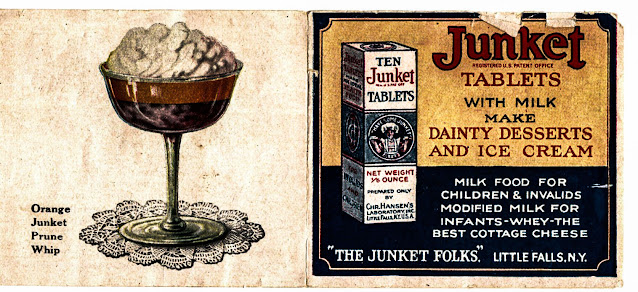Taken from Recipes of Carrie Nielsen Hafen
Junket: a noble rise and fall...and repeat
Junket isn't a new thing. Apparently, predecessors of junket were made as early as Medieval times, where a cream-and-rennet mixture, sweetened and flavored with rosewater, sugar, and spices, was an upper-class food, served to those among noble ranks.
Alas, along with the Tudor era came a taste for the next big thing, syllabub. Syllabub took over like cupcakes taking over cookies in the early 2000s. Junket was no longer a noble food, but it did trickle down to the masses--as it fell from popularity in genteel circles, it became an everyday food for commoners.
Then, in the late 1870s, junket went stateside. Christian Hansen, an owner of a lab in Denmark which made rennet extract for the cheese making industry, relocated to Herkimer County, New York; apparently, at that time, New York was the center of the US cheese industry (this is also the same era in which cream cheese became a Big Deal, btw). While the company's products expanded over the years, junket is the heart and soul of their offerings.
By the 1930s, junket had become a popular convenience food. For many, it was considered a food for the infirm: gentle on digestion for sick children's sensitive stomachs. For others, junket was an easy gateway to making homemade dessert. It's possible that perhaps the manufacturer was going for an elegant, European effect, though; as I learned from this article.



No comments:
Post a Comment